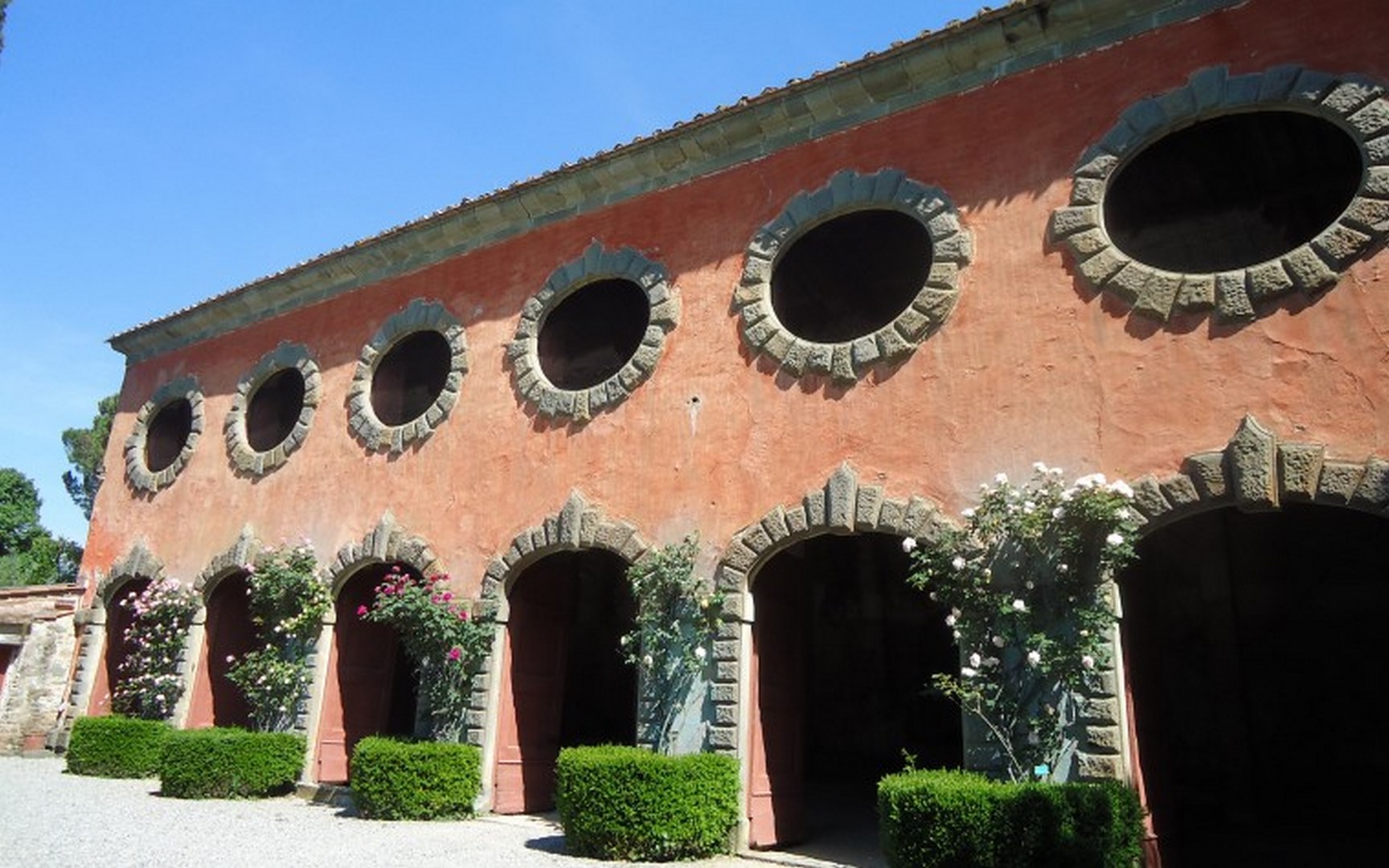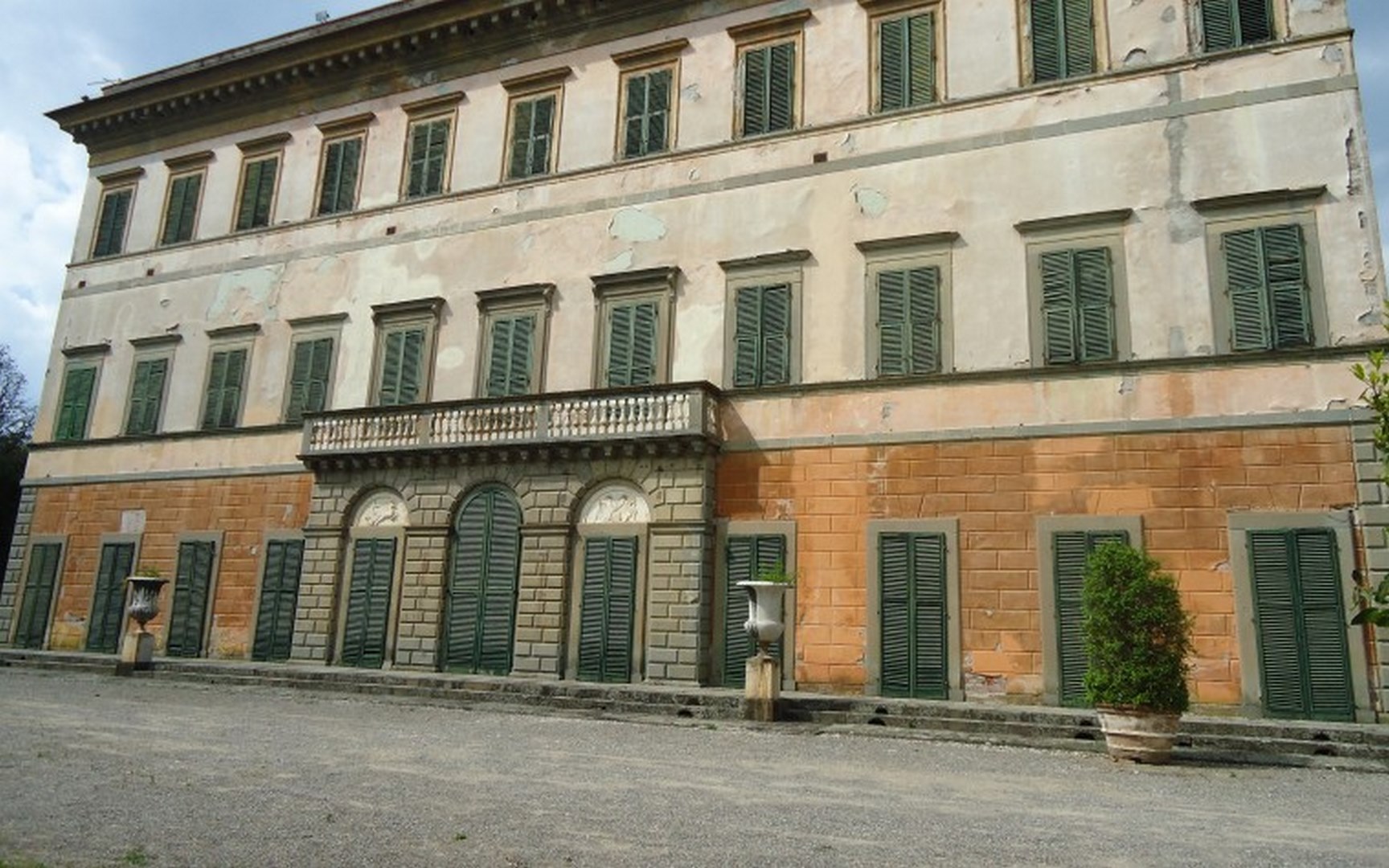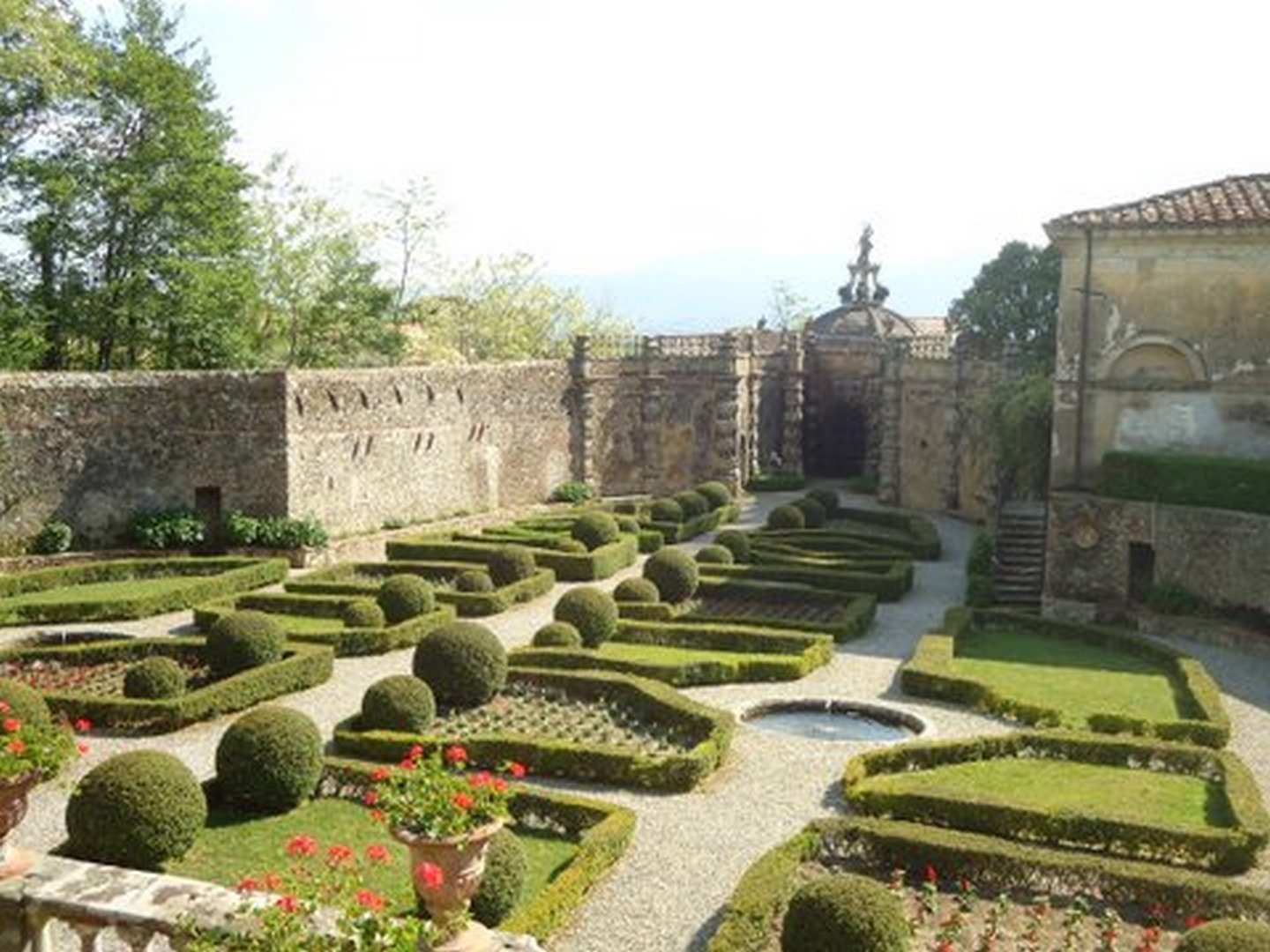Tuscany – May 2015

Entrance to hotel San Martino
Variety and contrast were the hallmarks of the two almost identical tours of Lucca in May 2015 with visits to a dilapidated 16th century villa, immaculately maintained village gardens brimming with flowers, delightfully modernised old houses with recently designed gardens, a hidden town garden behind high walls, a nursery specialising in ornamental citruses. In these we found a profusion of plants, lemon houses, huge trees and welcoming garden owners.
After settling in to our small hotel in a quiet back street within the walls of Lucca and a noisy but excellent welcome dinner at Ristorante Giglio in Lucca, the tour started the next day with visits to three classic Italian villas.
First we visited Villa Grabau behind which are many lemon trees in enormous old terracotta pots, a lily pond with a fountain and then woodland. Every winter the lemon trees are moved in to the lemon house (limonaia), which was built in 1640, a daunting job. At the sides and front of the house are a massive tulip tree, an unusual Podocarpus neriifolius, and Tilia platyphyllos, Ginkgo biloba, Pinus nigra var. maritima, Cedrus atlantica and Magnolia figo (syn. Michelia figo) in flower.

Villa Grabau

Lemon house at Villa Grabau
We were able to walk from Villa Grabau to Villa Oliva pictured on the past events page which, unusually, has a two-storey high loggia with six columns each cut from a single block of stone from Matraia. This looks out onto a lawn with a grotto and background of ilexes. A network of gardens at the rear is on different levels with the central one having an avenue of cypresses leading to a decorated gate.

Entrance to Villa Reale
In the afternoon we visited Villa Reale of Marlia, known as royal because it was inhabited by noble families and patrons of the arts, including Napoleon’s sister Elisa Baciocchi, at one time sovereign of Lucca and later of all of Tuscany. It is a huge estate with a lemon garden, green theatre, fishpond, separate 17th century Bishop’s House, Clock House, and 20th century Spanish garden with fountains.

Villa Reale

Cycas revoluta – Mecardonia in flower, Villa Oliva

Great fountain in the garden of lemons
Our second day, a Sunday, started with a guided visit to the Oscar Tintori citrus nursery which has 350 varieties of ornamental citrus. Sergio Tintori, a descendant of the founder, told us that traditionally in this part of Italy the rich would take their lemons in to their lemon houses in winter but country folk would grow them against a wall. He showed us their 100-year-old one growing on a wall beside the entrance to their covered display area where there is a pergola created from one Citrus x limon ‘Lunario’.

From here we continued to the village of Buggiano Castello where several of the residents had agreed to open their gardens for us in exchange for a contribution to their fund to restore the old church tower beside the gate into the village. These little gardens were a feast of flowers, best summed up in the pictures, and the garden owners were very warm and welcoming to both of our two groups.


The gardens of Buggiano Castello


Villa Torrigiani

Lower garden Villa Torrigiani

Villa Torrigiani
Lunch that day was at a café beside the gardens of Villa Garzoni, from which one could see the two-dimensional geometrically laid out lower garden, and many of us climbed the steps to the top of the partly running cascade. The day ended with a visit guided by one of the last of the family bearing the name Torrigiani to the villa of that name. It was very special to be taken around the ground floor of the house by the owner. The approach is magnificent up an avenue of cypresses nearly a kilometre long and the garden itself has a fishpond, a long dark grotto, elegant stone stairways.
Monday was very different. We visited the large and remote country garden of a plantaholic art teacher, then a garden designed to show off a collection of more than a hundred modern sculptures by distinguished artists, and finally the garden of one of our members, Sir Idris Pearce. To finish up with Sir Idris and have him take us round the garden himself, accompanied by the people who have helped him redesign the garden, made a lovely end to this day which is described in more detail below.
The fourth day took us to the 60-acre estate south of Lucca created by Gil Cohen and Paul Gervais, where we were warmly welcomed by the new owner’s daughter, and shown round by the gardener. Villa Massei, originally a 16th century hunting lodge, is built into a hill with three floors facing downhill, north towards the pretty village just below, and two floors facing uphill. Paul Gervais, born in Maine in 1946, was educated in Vermont and San Francisco, working in advertising and real estate, then became a garden designer and writer. His book, A Garden in Lucca, (2000) gives a personal account of his purchase of the villa. The villa was sold in 2014 to a Dutch family.

Villa Massei: Rosa ‘Claire Jacquier’ on pergola copied from Trebbio

Refreshments with the family

Villa Massei: the box garden
After a delicious fish lunch in the garden of the Canuleia restaurant inside the walls of Lucca we visited a very private garden, hidden behind high walls. This time we were accompanied by Didier Berruyer who looks after the garden for the owner. We finished the day at Palazzo Pfanner, a Baroque garden with lots of roses, bay, box, bamboo and statues. Inside the palazzo, up a splendid stone staircase, we visited the museum which features medical and surgical instruments collected by Dr Pietro Pfanner (1864 – 1935) who was a surgeon, philanthropist and one-time mayor of Lucca.
Heather Martin
A day of private garden visits during the Lucca tour
Armed with a plant list of over 800 species, the group made its way up the hillside near Valgiano to visit the first garden of the day. Over a period of 30 years, Barbara Mariti had transformed a hectare full of brambles and planted herself everything that is there now except for the olive trees.

Long grass left for wild flowers including serapias

Our hostess (right) at Valgiano

Refreshments at Valgiano
It was an amazing feat: numerous paths winding through the widest range of trees and plants. In some places, spectacular views were partially obscured by the vigorous growth of the trees but the bonus was the protection they offered the more delicate specimens. Nearly 300 names on the plant list were different varieties of rose. The climbing varieties, scrambling to great height through the trees, were particularly admired. All the roses were in splendid condition, as in every garden we visited. No greenfly, perhaps, but there were tales of wild boar and porcupine roaming the estate.
Lunch was next on the programme: a so-called workman’s lunch of chicken in batter or pollo fritto at the Ristorante La Cantina di Carignano. The restaurant also ran a cookery school and so the high standard was not surprising: “educational and entertaining – Lucca’s best attraction”, wrote a travelling Texan on Tripadvisor.

The sculpture garden

Mecardonia Gold Dust ‘USMECA8205’ in the sculpture garden
The second garden visit, again one hectare, could not have been a greater contrast to the first. This was the home of a Dutch family whose garden had been designed to display an outstanding collection of modern sculpture. The landscape architect, Giuseppe Lunardini, escorted our group, explaining his aim had been to work with the existing landscape in positioning the many works of art and to use a narrow range of plants in soft colours to show them to best effect. The white rose, Rosa Francis Meilland ‘Meitroni’ and the soft blue grey Teucrium fruticans were particularly admired.
The final visit of the day was to the garden of Sir Idris Pearce, a member and great supporter of Mediterranean Plants and Gardens. Villa Benvenuti is situated to the west of Lucca, with a garden of heavy clay soil and many variations of temperature.
Sir Idris explained how his garden was designed to give colour throughout the year but still incorporating foliage, shade and, as in all the best Italian gardens, flowing water. The walled gardens comprised a series of rooms on terraces, including a parterre, a kitchen garden and a swimming pool. We heard of trees lost through recent 100-mile-an-hour gales and box blight destroying the hedging but, disasters apart, it was considered by everyone a beautiful garden in a much loved and used family home.

Poolside planting at Sir Idris’s Villa Benvenuti

Second group at Villa Benvenuti
The group was offered a glass or two of White or Red Dragon (Sir Idris’s own wine reflecting his Welsh roots rather than those of the vine) and the party then made its way, expressing great appreciation to their host.
The story went that dinner would be served in a butcher’s shop and this was nearly the case. Il Ciancino was a restaurant attached to a butcher’s and served course after course, not surprisingly all pretty meaty. It was the end of a full and splendid day giving great pleasure to everyone.
Faith Clarke
















